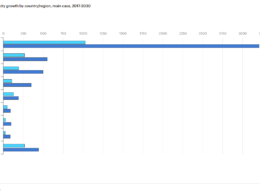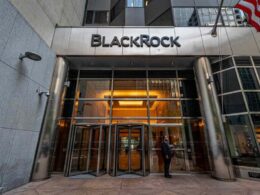Golden Agri-Resources (GAR) emerged as one of the top performers at the 11th Asia Sustainability Reporting Awards (ASRA), securing Platinum for Asia’s Best Supply Chain Reporting and Bronze for Asia’s Best Environmental Impact Reporting.
In this exclusive interview, Anita Neville, Chief Sustainability and Communications Officer, reflects on what the awards signify for GAR’s sustainability ambitions. “These awards affirm our commitment to rigorous sustainability reporting and continuous improvement,” she says, highlighting how traceability, accountability and data integrity have evolved into defining pillars of the organisation’s sustainability strategy.
Congratulations on winning at the 11th Asia Sustainability Reporting Awards. What does this recognition mean for your sustainability team and your organisation?
It’s an honour to be recognised for our supply chain and environmental impact reporting at this year’s awards. For Golden Agri-Resources (GAR), one of the world’s largest integrated palm oil agribusinesses, this recognition underscores the scale of our responsibility and the opportunity we have to lead.
With over half a million hectares of plantations in Indonesia, and an extensive supply chain that reaches over 800,000 independent smallholder farmers, traceability, transparency and accountability are fundamental to how we operate.
These awards affirm our commitment to rigorous sustainability reporting and continuous improvement. They signal to stakeholders that we remain dedicated to upholding the highest standards of governance and disclosure.
But most of all, they recognise the collective effort across our business to deliver real results on the ground that inform the data, insights, and commitments within this report.
Sustainability reporting has evolved rapidly. How has your reporting approach matured over the past few years, and what were the biggest lessons from this journey?
Our reporting has come a long way since our first standalone Sustainability Report in 2011. What began as a compliance exercise has matured into a strategic tool to inform, engage and, we hope, inspire stakeholders; showing where we are making progress, where challenges remain and how we plan to deliver long-term impact.
In our latest sustainability report, we introduced our new Collective for Impact sustainability framework, which sets our clear commitments in critical areas such as decarbonisation, nature protection and community economic empowerment. This reflects a shift from simply reporting data to demonstrating how sustainability is embedded in our business strategy.
Over more than a decade, we’ve learned that reporting alone is not enough; stakeholders need reporting they can trust. The sustainability reporting space is dynamic with evolving regulations in different jurisdictions alongside voluntary standards and frameworks. Like others we are navigating these changes and adding independent external assurance to enhance data integrity and strengthen stakeholder trust.
Sustainability reporting now serves a wider audience, from investors and regulators to customers and peers, all demanding transparency and accountability. Our focus now is staying ahead of these developments by pairing robust data governance with internal capacity building, ensuring our reporting remains credible, relevant and impactful.
The ASRA judges emphasise rigour, transparency, and impact. Which parts of your report do you feel best demonstrate these qualities?
Our supply chain and environmental reporting best demonstrate rigour, transparency, and impact. We disclose detailed progress on traceability and supplier engagement, backed by independent verification, and we quantify measurable outcomes like emissions reductions and renewable energy adoption. Beyond data, we share real stories of smallholder training and community empowerment — showing sustainability is about impact, not just numbers.
I have always been incredibly proud of GAR’s work in supply chain traceability and transformation, so I am delighted that this was recognised by ASRA with a Platinum Award. The Bronze Award for our Environmental Impact reporting is another high point in an area that will continue to be a major focus for our organisation in future.
Could you walk us through the process of materiality assessment — and how you are now integrating double materiality or value-chain impacts into your reporting?
In 2024, we decided to conduct a double materiality assessment. This means we now consider both how our operations impact the world and how ESG factors affect GAR’s financial performance and long-term resilience.
By applying this dual perspective, we are better able to anticipate risks, adapt to evolving regulations and align with stakeholder concerns.
The process combines internal engagement and external input, ensuring priorities reflect business relevance and value chain impacts. The outcome sharpens our focus on what matters most and helps future-proof our strategy with robust and credible data.
How do you ensure data accuracy and credibility across complex topics such as GHG emissions, supply-chain sustainability, and human rights?
We ensure data accuracy through a structured governance process. Each functional team verifies its data, supported by clear approval workflows and periodic internal reviews, while our Sustainability Committee provides quarterly oversight to reinforce accountability.
To strengthen credibility, we’ve introduced independent external assurance — starting with supply chain data in 2022 and now expanded to GHG emissions — with plans to broaden coverage further. This combination of internal discipline and third-party verification ensures our reporting remains robust, consistent, and trusted.
What new sustainability frameworks (for example, ISSB or TNFD) are you preparing to align with, and what challenges or opportunities do they bring?
We’re preparing to align with both ISSB and TNFD frameworks, which represent a major shift in sustainability reporting. These standards move companies beyond compliance to quantifying the financial implications of climate and nature-related risks.
This evolution reframes ESG from being seen as a cost or regulatory obligation to a driver of innovation, resource efficiency, and long-term value creation — an approach we fully embrace.
Reporting aside, which sustainability initiative or achievement from the past year are you personally most proud of?
GAR’s scale gives us both a great responsibility and a great opportunity to empower agricultural communities.
Beyond our long-standing excellence in supply chain traceability, I am very proud of our smallholder education programme, Sawit Terampil, which is critical to achieve our goal of training 100,000 smallholders in sustainable agricultural practices by 2035. When smallholders thrive, the entire supply chain becomes stronger.
Beyond agriculture, we’ve expanded early childhood education in rural areas through partnerships like the one we have with ADM, helping to build resilient rural economies and stronger foundations for long-term prosperity.
How do you engage internal teams and business units in the sustainability agenda so that reporting reflects genuine performance, not just compliance?
Lots of companies say this, but at GAR, sustainability is not part of our business strategy; it is our business strategy. Palm oil depends on healthy soils, biodiversity, and stable, predictable weather patterns, so protecting these through sustainable practices, is fundamental to long-term success.
We embed sustainability through clear ownership, structured collaboration, and continuous communication. Each function is accountable for its data and targets, supported by regular reviews, workshops, and training that link sustainability to business value. Our Sustainability Committee—comprising senior leaders—meets quarterly to reinforce alignment and drive performance beyond compliance.
Importantly, we encourage teams to focus on impact, not just reporting. From developing low-carbon products to implementing nature-based solutions and partnering with buyers on sustainable sourcing, these initiatives show that sustainability is an opportunity to create value, strengthen partnerships, and future-proof the business.
Many companies are still struggling to link sustainability KPIs with business results. How has your organisation made that connection visible in its strategy and disclosures?
Linking sustainability KPIs to business results is an ongoing process for us, but we are making progress. We are now integrating metrics like energy efficiency, water conservation, and GHG emissions reduction into operational targets, directly connecting them to cost savings and performance improvements.
Investments in methane capture, solar installations, and nature-based solutions are evaluated not only for their environmental impact but also for their return on investment and contribution to long-term resilience, reinforcing sustainability as a business driver.
This shift is changing mindsets from viewing sustainability as a cost to seeing it as an enabler of efficiency, innovation, and growth.
Finally, what advice would you give to other sustainability professionals aspiring to reach ASRA-winning standards in their reports?
Stop treating sustainability reporting as a compliance exercise, make it a platform to show real impact. Be transparent about wins and challenges, connect strategy to outcomes, and let the data tell a story people can trust. Build collaboration across teams, invest in accuracy, and never stop learning. The best reports don’t just share numbers; they reveal the people and progress behind them.





















